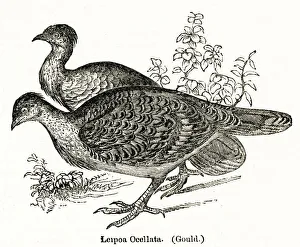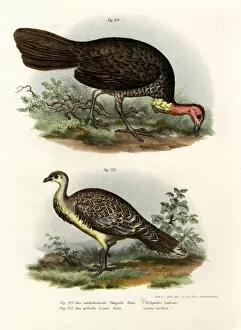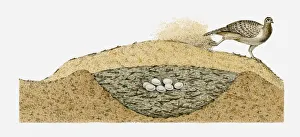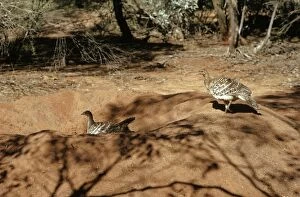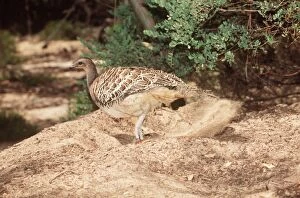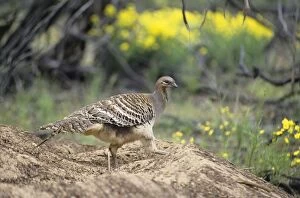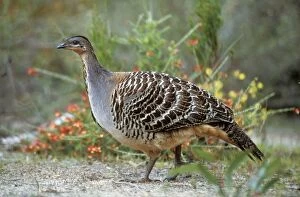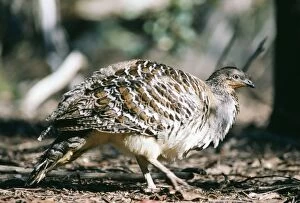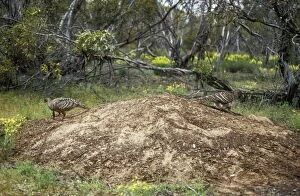Malleefowl Collection
The Malleefowl, scientifically known as Leipoa ocellata, is a fascinating Australian bird that captures the attention with its unique behaviors and striking appearance
All Professionally Made to Order for Quick Shipping
The Malleefowl, scientifically known as Leipoa ocellata, is a fascinating Australian bird that captures the attention with its unique behaviors and striking appearance. Also referred to as the Australian Brush-Turkey, this species has been documented since 1864 in colorful lithographs. One captivating illustration showcases the Malleefowl diligently covering its eggs with sand, displaying an exceptional parental instinct. This image (Picture No. 10865321) highlights their remarkable nesting habits and protective nature towards their offspring. Another photograph (Picture No. 10865310) depicts a male and female Malleefowl on a mound found in the southwestern and southern regions of Australia (JPF05455). These mounds serve as incubators for their eggs, where they carefully regulate temperature by raking surrounding vegetation onto them. Found predominantly in Little Desert, Victoria, Australia, these megapodes are well-adapted to arid environments like the mallee scrubland. Their resilience is evident through images showcasing them amidst this unique habitat (Mallee Fowl). With repeated mentions of "Mallee Fowl, " it emphasizes how integral these birds are to Australia's ecosystem. Despite facing challenges such as habitat loss and predation threats over time, conservation efforts continue to protect this iconic species. The Malleefowl stands out not only for its distinctive name but also for its intriguing behaviors captured through various illustrations and photographs throughout history.

